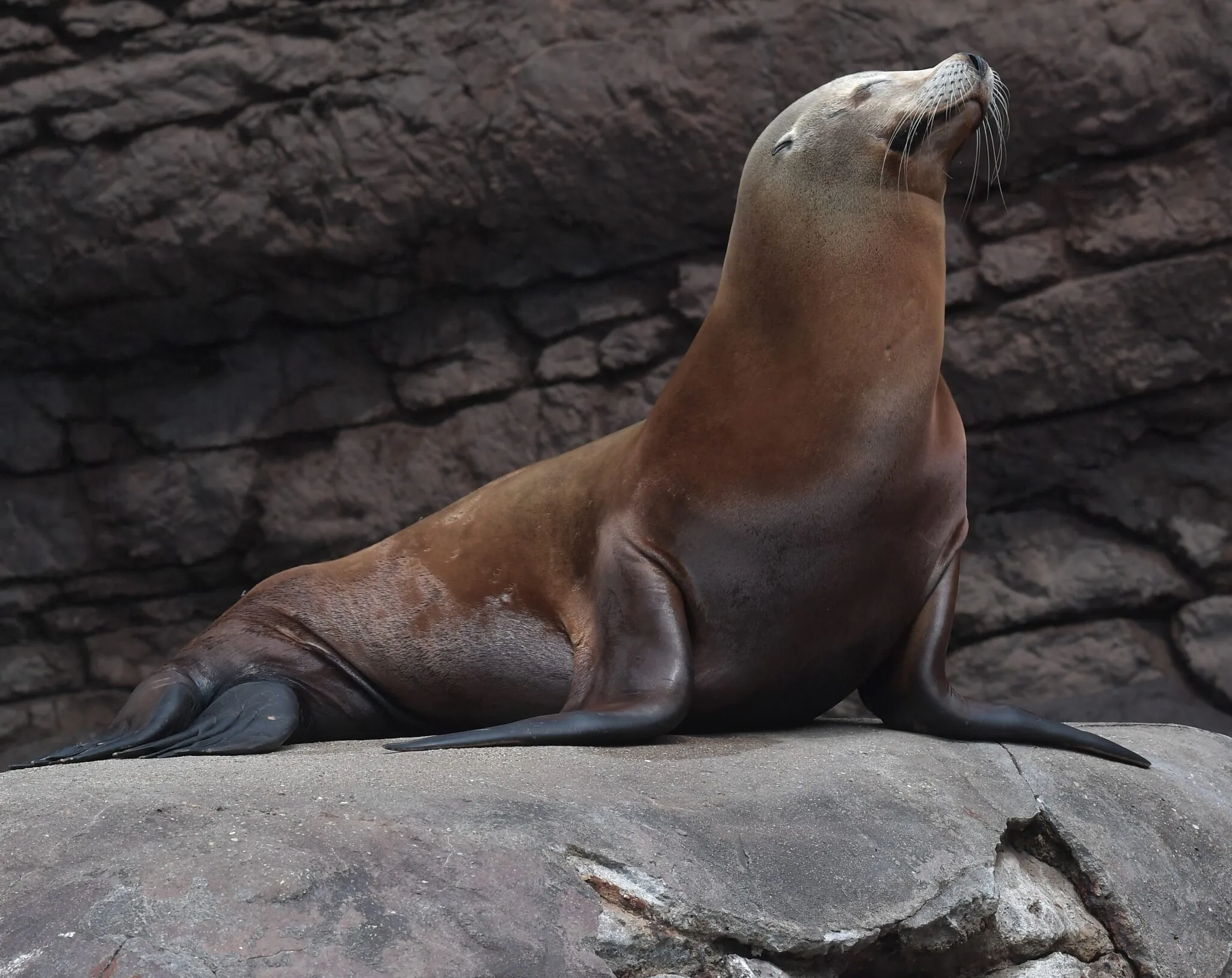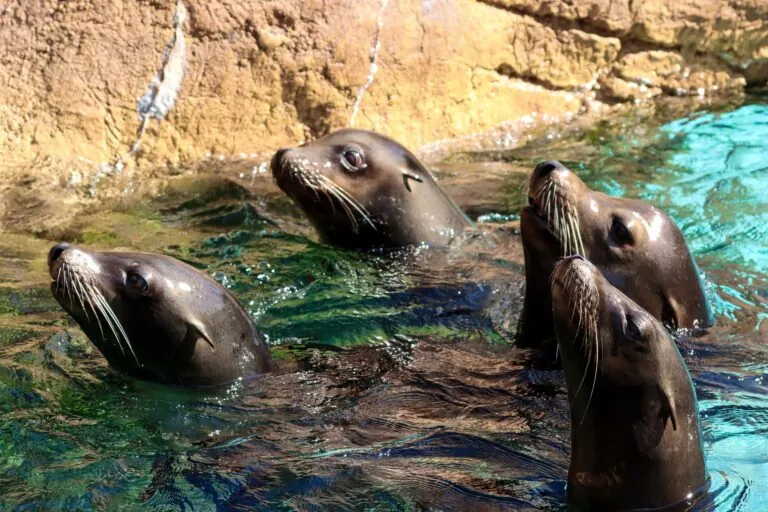-
Menu
- Plan Your Visit
- Meet The Animals
- Check Out Events
- Memberships
- About The Zoo
- Support the Zoo
- Conservation
- Education
- Groups & Private Events
- Zoo News
- Contact
- Indianapolis Prize
- Global Center for Species Survival
- Schedule
- Donate
- Membership
- Tickets

- Plan Your Visit
- Meet The Animals
- Check Out Events
- Memberships
- About The Zoo
- Support the Zoo
- Conservation
- Education
- Groups & Private Events
- Zoo News
- Contact
- Indianapolis Prize
- Global Center for Species Survival

California Sea Lion
Zalophus californianus
About
Some species of sea lions have “manes” of fur on their heads and necks, which gives these animals their name. California sea lions don’t have manes, but they can make loud calls—their version of a roar! They often hang out in small groups to feed and travel—or in very large groups each year at breeding season—so their voices and ears come in handy to communicate with other sea lions. They also have sensitive whiskers called vibrissae that help them feel motion in their environment, such as from the fish they hunt. They use echolocation to navigate when swimming.
Sea lions stay warm in the cold ocean water with a thick layer of blubber, that also gives them fat reserves for energy to hunt and migrate. They can reach speeds of up to 25 miles per hour when swimming and can dive nearly 1,000 feet while holding their breath for more than 10 minutes.
Young sea lions are born together in large groups of sea lions called rookeries. They are cared for by their moms for up to a year, and they can live to be more than 30 years old.

Conservation
Sea lions are doing well in their habitats, thanks in part to protections from the U.S. government. They face some threats from fisheries, pollution and disease. Be sure to give sea lions and other wild animals their space to stay safe and show their natural behaviors. You can also protect ocean wildlife by choosing sustainable seafood. The Seafood Watch program can teach you how!

The California sea lions will amaze with their vocalizations, gestures and wonderful diving abilities.
WHERE ARE THEY AT THE ZOO?

